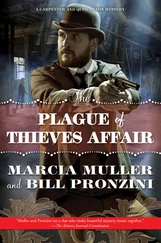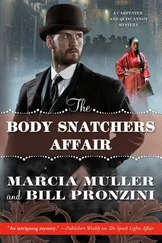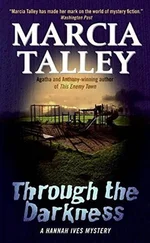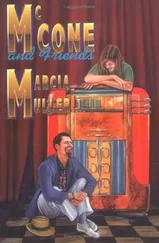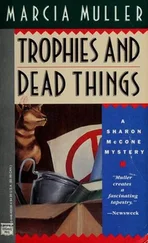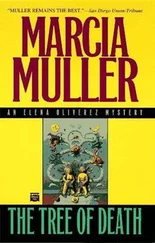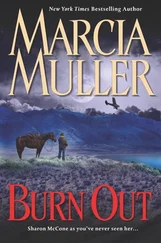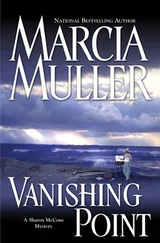Marcia Muller - Games to Keep the Dark Away
Здесь есть возможность читать онлайн «Marcia Muller - Games to Keep the Dark Away» весь текст электронной книги совершенно бесплатно (целиком полную версию без сокращений). В некоторых случаях можно слушать аудио, скачать через торрент в формате fb2 и присутствует краткое содержание. Жанр: Детектив, на английском языке. Описание произведения, (предисловие) а так же отзывы посетителей доступны на портале библиотеки ЛибКат.
- Название:Games to Keep the Dark Away
- Автор:
- Жанр:
- Год:неизвестен
- ISBN:нет данных
- Рейтинг книги:5 / 5. Голосов: 1
-
Избранное:Добавить в избранное
- Отзывы:
-
Ваша оценка:
- 100
- 1
- 2
- 3
- 4
- 5
Games to Keep the Dark Away: краткое содержание, описание и аннотация
Предлагаем к чтению аннотацию, описание, краткое содержание или предисловие (зависит от того, что написал сам автор книги «Games to Keep the Dark Away»). Если вы не нашли необходимую информацию о книге — напишите в комментариях, мы постараемся отыскать её.
Games to Keep the Dark Away — читать онлайн бесплатно полную книгу (весь текст) целиком
Ниже представлен текст книги, разбитый по страницам. Система сохранения места последней прочитанной страницы, позволяет с удобством читать онлайн бесплатно книгу «Games to Keep the Dark Away», без необходимости каждый раз заново искать на чём Вы остановились. Поставьте закладку, и сможете в любой момент перейти на страницу, на которой закончили чтение.
Интервал:
Закладка:
“So that’s where we stand at present,” Barrow said. “This one isn’t going to be easy.”
“You seem to be acting on the theory that the killer was someone out of Jane’s past.”
“It stands to reason. She was killed in Salmon Bay, in a place that few people from outside the area would know about.”
“She could have arranged to meet an outsider there.”
“Possibly.” But he obviously didn’t think much of the idea because he changed the subject. “I take it you’re back in town?”
“Yes. I’d like to ask your permission to follow up on a few leads. Of course, I’d report my findings immediately.”
“What kind of leads?”
“Nothing earthshaking. I’d like to talk to Jane’s mother again, and possibly John Cala.”
“If you can get anything out of either of them, I’ll be very surprised. The people in that damned village are as close-mouthed as they come.”
“So I’ve noticed. But I’d like to try anyway. Also, I want to talk to the people at The Tidepools. I suppose you investigated the deaths there?”
There was a pause. “Yes, but I don’t see any connection.”
“Jane worked there at the time.”
“I know that; we’ve already checked with their personnel director, Ann Bates. But the deaths are a closed file, except for the last one, where the husband apparently did the killing and then disappeared.”
“I’d still like to look into a possible connection.”
“Go ahead, if you want. But I doubt you’ll find one.”
“But it’s okay with you?”
“Sure. Just keep in touch.”
As I’d expected, he hadn’t asked me if Snelling was still my client. I hung up, found the address of the public library in the phone book, and set off to check their back issues of the Port San Marco Herald.
At five o’clock, I rewound the last reel of microfilm and left the redwood-and-glass building that housed the library, rubbing my eyes. The first death at The Tidepools, of a seventy-eight-year-old patient named Mary Sloan, had been perfunctorily reported as a suicide. With the second, of an eighty-three-year-old woman named Amelia Canfield, the reporter had indulged in speculation that the drug overdoses had been connected. A small item appeared weeks later, stating that both deaths had been ruled suicides. Two months later, Barbara Smith’s death had received front-page coverage.
Mrs. Smith had been in her early thirties, suffering from terminal cancer. She had been at The Tidepools barely three weeks when she was found dead, an apparent overdose like the others. What distinguished her death from theirs, however-besides the obvious difference in age-was that she hadn’t been at the hospice long enough to have saved up a lethal dose of the painkiller. In fact, she hadn’t been receiving the mixture for more than a few days. And, immediately after her death, her husband, Andy, a medical technician with Port San Marco General Hospital, had vanished.
The reporter had talked to Barbara Smith’s friends and relatives. She had been in good spirits, they said, and was happy to have been admitted to The Tidepools. Besides, she wasn’t the type to kill herself. I myself tended to discount their statements. If you believe the friends and relatives, no one who commits suicide is the type to do it. What I didn’t discount was the fact that two months before her death Barbara Smith had received an inheritance of more than forty thousand dollars, which should have gone to pay for the cost of her lengthy care at the hospice. Her husband had withdrawn the money in cash from their Joint savings account several days before she died-and he left town in a hurry.
The story had continued to receive coverage for a week after Barbara Smith’s death but, when the police failed to locate her husband, it had faded into obscurity. Probably Smith would never be found; forty thousand dollars could buy a lot of anonymity.
I went back to my motel, put on my swimsuit, and went out to the pool. Swimming was the one sport I really enjoyed-far more than the tedious workouts I endured weekly at my neighborhood health club-and it also relaxed me and helped me think. I was firmly convinced there was some mysterious connection between water and the creative process: I knew writers who wrote in the bathtub, businessmen who plotted strategy in the shower, actors who worked on their lines in the hot tub. As for myself, I puzzled out cases in swimming pools.
I eased into the unheated water and began swimming. Up, down, across, back, laps, lengths. Sidestroke, crawl, breaststroke, butterfly. I was getting plenty of exercise, but after a while I realized nothing else was happening. The facts of the case failed to form any rational pattern.
Jane Anthony had been missing for a week and then someone had stabbed her to death… She had been killed in an out-of-the-way place few people except for residents of Salmon Bay would ever know about… The man who first discovered her body had no good reason for being in that place…Abe Snelling had panicked after hearing of Jane’s death, then called a halt to my investigation…Snelling had also lied to me about how he met Jane…There had been three deaths at The Tidepools while Jane had worked there, all of them suspicious…Jane had been assigned to the medical team that had worked with at least one of those patients…
I needed to find out why John Cala had gone to the old pier. I needed to find out if Jane had been assigned to the other women who had died of overdoses at The Tidepools. I needed to find out how Jane really met Snelling.
I got out of the pool and went back to my room. While blow-drying my hair, I planned a course of action. I would go to see Mrs. Anthony and John Cala. And tomorrow I would convince either Ann Bates or Allen Keller to let me look at The Tidepools records on Jane. Probably the police had already done so, but they hadn’t been looking for the same thing I was.
When I arrived in Salmon Bay, the Anthony home was dark. After knocking and getting no response, I asked an old man who was mowing the lawn which house was John Cala’s. He pointed to the one to the right of Sylvia Anthony’s. It was small and box-like and had once been painted a light green, but the color had faded and now the paint was beginning to peel. Cypress trees hunched on either side of it, their branches drooping onto its flat roof. The unfenced front yard contained an assortment of junk: tires, lumber, plastic milk crates, old mattresses, rolls of chicken wire, and a washing machine without a lid. I’d noticed the place before, mainly because it presented such a contrast to Mrs. Anthony’s flower-filled yard. I decided it fit with my impression of Cala. I made my way through the jumble to the front door and knocked but got no answer. Either Cala and Sylvia Anthony weren’t home, or they weren’t in the mood to welcome callers.
I went back to the MG and started it, uncertain of what to do next. Glancing at my watch, I flipped the radio to KPSM Don Del Boccio was dedicating a song from Sally to Larry and urging listeners to call in on the Hot Hit Line. I drove to the Shorebird Bar, got out a dime, and went into the phone booth.
“Hot Hit Line,” Don’s voice said. “What can I play for you tonight?”
“I doubt you’ve got anything there I’d want to listen to. It’s Sharon McCone. Can I buy you a drink after your show?”
“You sure can. I was hoping you’d get in touch. How about eight-fifteen at the Sand Dollar? It’s on Beach Street, by the marina.”
I’d seen the place. “All right. See you then.” I went back to the car and started off toward Port San Marco, feeling much more cheerful. As I turned up the radio, a tire commercial ended and Del Boccio, in a softer voice than he usually employed, dedicated a song to Sharon from Don. It was James Taylor’s “You’ve Got a Friend.”
Читать дальшеИнтервал:
Закладка:
Похожие книги на «Games to Keep the Dark Away»
Представляем Вашему вниманию похожие книги на «Games to Keep the Dark Away» списком для выбора. Мы отобрали схожую по названию и смыслу литературу в надежде предоставить читателям больше вариантов отыскать новые, интересные, ещё непрочитанные произведения.
Обсуждение, отзывы о книге «Games to Keep the Dark Away» и просто собственные мнения читателей. Оставьте ваши комментарии, напишите, что Вы думаете о произведении, его смысле или главных героях. Укажите что конкретно понравилось, а что нет, и почему Вы так считаете.

